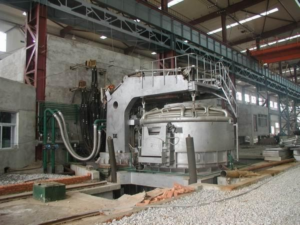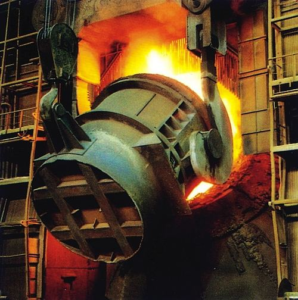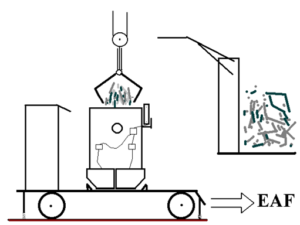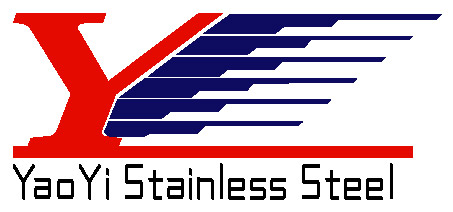how stainless steel is made? There are currently three methods for stainless steel smelting in the world.
One step method
Principle: that is, electric furnace one step smelting stainless steel. The stainless steel is mainly produced by the electric arc furnace by the return oxygen blowing method. The oxidizing and exothermic of the alloy element is used to raise the temperature of the molten steel to 1400~1600 °C, and the high chromium steel liquid is decarburized and chromium-preserved at high temperature.

Working process: The heat required to melt the scrap is provided by the arc between the electrode and the scrap. The melting temperature of the scrap is determined by its composition and is generally melted at 1400-1550 ° C (304 ° melting point 1454 ° C). When the scrap is melted, it is still necessary to heat up so that the refining reaction can proceed normally. Oxygen and carbon can be directly blown into the molten steel and slag phase. However, the reaction product may affect the quality of the product and therefore needs careful control. The slag is usually foamed. Agents such as lime, dolomite and fluorite. The density of slag is less than the density of molten steel, usually floating on the surface of molten steel. In addition to adsorbing impurities in molten steel and preventing secondary oxidation of molten steel, it can also protect The furnace wall is protected from the radiation of the arc, which can improve the efficiency of electricity. Therefore, it is very important to select high-quality slag and make it foamable.
Disadvantages: Due to the demanding requirements of one-step raw materials (returning stainless steel scrap, low-carbon ferrochrome and metallic chromium), high consumption of raw materials and energy media in production, high cost, long smelting cycle, low productivity, low product variety and poor quality, The lining life is short and the refractory consumption is high, so this method is rarely used to produce stainless steel.
Two-step method:
In 1965 and 1968, VOD and AOD refining units were produced one after another, which played a decisive role in the transformation of stainless steel production processes. The former is vacuum oxygen decarburization, and the latter is decarburization by diluting the gas with argon and nitrogen. Combining any of these two refining facilities with an electric furnace creates a two-step process for producing stainless steel.

VOD disadvantages:
The electric furnace and VOD two-step steelmaking process are more suitable for stainless steel production of small-scale and multi-variety compatible factories.
AOD disadvantages:
- The furnace lining has a short service life;
- The consumption of reduced ferrosilicon is large;
- At present, it is not possible to produce ultra-low C, ultra-low nitrogen, stainless steel, and the gas content in steel is relatively high;
- The consumption of argon is large.
Three-step method:
The three-step method is to add deep decarbonization equipment based on the two-step method. The usual three-step method includes various forms such as preliminary furnace→AOD→VOD→(LF)→CC, preliminary furnace→MRP→VOD→(LF)→CC. In the first step, the primary furnace only melts and alloys to provide liquid metal for the second step of converter smelting. The second step is rapid decarburization and prevention of oxidation of chromium. The third step is to further decarburize and adjust the composition of the molten steel under vacuum conditions of VOD or LF refining furnace.
Ingredients: Ingredients are an indispensable component of the electric steelmaking process. Whether the ingredients are reasonably related to whether the steelmaker can normally carry out the smelting operation according to the process requirements. Reasonable ingredients can shorten the smelting time. Pay attention to the ingredients: First, the batching calculation must be carried out correctly and the charge amount of the charge should be accurately weighed. Second, the size of the charge should be proportioned to achieve the purpose of good loading and quickening. Third, all types of charge should be used in accordance with the quality requirements of steel and smelting methods. Fourth, the ingredients must meet the process requirements.

